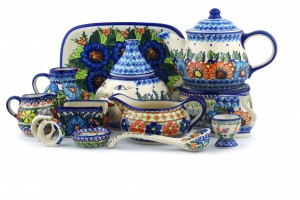
If you have ever wondered about how the famed town of Boleslawiec began producing the exquisite Polish Pottery of today, you need to start several thousand ago. The remarkable pottery created by artisans in Boleslawiec has roots dating back to at least 6,000 B.C. The story of Boleslawiec Polish Pottery is both an interesting and triumphant one. The potters of this town and region have had to overcome immense setbacks, but they have always prevailed and exist as one of the most famous producers of pottery in the world.
Stroke-Ornamented Ware Culture
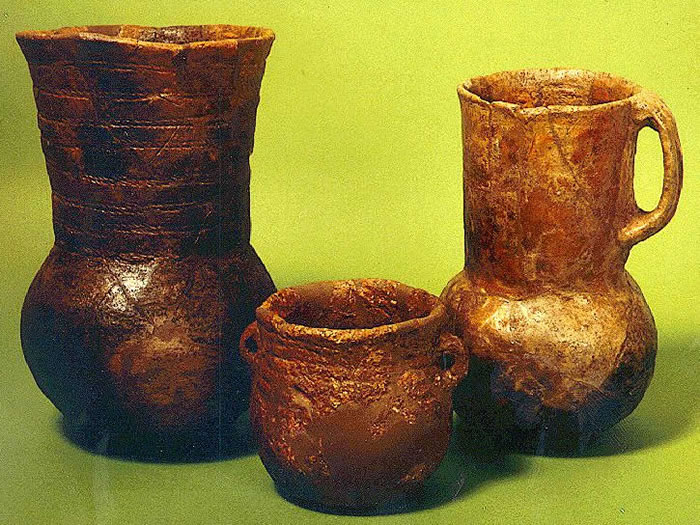
Archaeologists have found evidence of earlier cultures settled in this area, cultures such as the Linear Band Ware Culture, but we will begin with the Stoke-Ornamented Ware Culture, (also called Stichbandkeramik in German, or STK for short). Pottery found from this culture dates back over 7,000 years. Though they were spread throughout Germany, Poland, Austria, and the Czech Republic, STK culture was centered within the Silesia Region in Poland (just like Boleslawiec!). STK earned its name from the German archaeologists studying their pottery. These vessels were generally pear shaped with a large band around the top of the vessel. The name derives from the strokes used to decorate the pots. The strokes were used to form a pattern of contiguous A’s around the vessel. Evidence also shows that the pottery from this region was more advanced than nearby cultures of the time. Additionally, the surfaces of these vessels were shiny, indicating that they may have been using some type of glaze on these pots when they were fired.
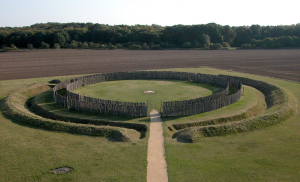
A really interesting side note about the STK culture is that there was a structure found at Gosek (located south of Berlin) that could be described as a wooden version of Stonehenge. It was likely used to observe the course of the sun in order to calculate a lunar calendar. Evidence of fire, human and animal remains as well as a decapitated skeleton can be found at this structure suggesting sacrifices (both human and animal) may have taken place here!
Corded Ware Culture
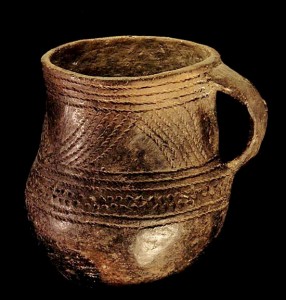
Following the STK culture was the Corded Ware Culture living from around 3200 BC to around 1800 BC and spanning across parts of Germany and all of what is present-day Poland. The pottery produced by this culture was tan or brown and decorated with bands of dots around the surface. The vessels were either beaker-shaped or large round pots called Amphoras.
The Pomerelian Face Urn Culture
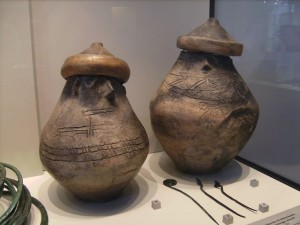
Around 500 BC, during the Iron Age, came the Pomerelian Face Urn Culture. Their pottery featured male faces around the neck of the vessel and a bulbous base representing the human torso. These burial urns had hat-lids decorated with solar motifs. In many cases, small bronze earrings were placed on the pottery. Each urn had separate facial characteristics and there was often a hunting scene or even a chariot race painted on each vessel.
The Middle Ages
Following the dark ages, pottery from the early middle ages has been found in Boleslawiec dating from around 600 AD when the town was called Boleslawice. Boleslawiec itself was established in 1202, it was then a German town named Bunslau (this is why the pottery is sometimes referred to as Bunslau pottery). Boleslawiec is still known today for its excellent naturally found stoneware. The people of the middle ages were privy to this and historical records from 1380 speak of a Potter from Boleslawiec. Unfortunately, in 1492 the town was nearly decimated by the Hussite Wars. Thankfully, the town was rebuilt and the first pottery Guild was formed in 1511. Pottery dating from this era contains the signatures of the master craftsmen who created them. This may be viewed as a precursor to Unikat pieces.
Pottery for Royalty
Boleslawiec was one again nearly destroyed, this time by the Thirty Year War lasting from 1618 to 1648. The town went from 600 residents to 80. Once again, Boleslawiec was rebuilt by its potters and began making pottery for royalty around 1650, this reputation for excellent pottery spread throughout Europe in the 1700s.
The Beginning of the Modern Boleslawiec Tradition
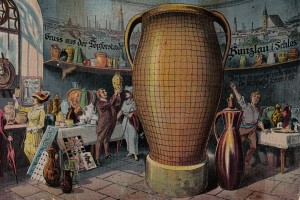
In 1753, potters of the area built a 6 foot tall clay pot which became the symbol for Boleslawiec, a replica of this pot still rests in the town square today. At this time, the pottery produced in Boleslawiec was made of a brown clay body called earthenware and covered with brown glaze. Additionally, all of the pottery was created on the potter’s wheel. This is much different than the pottery produced today. The pottery made in modern Boleslawiec is in large part a result of the efforts of Johann Gottlieb Altman. He introduced reusable molds to the region and began using a different clay body, known as stoneware. Stoneware is white like porcelain and far more durable than earthenware. Also, he porbably saved lives by introducing glazes made with the element Feldspar rather than continuing to use glazes made with lead.
The Famous Peacock Pattern
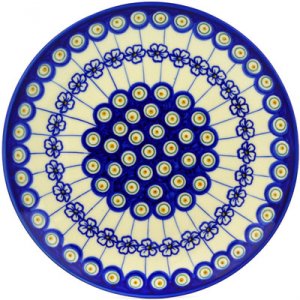
Potters wanted to attract the favour of royalty and nobility to ensure they would have continued income, this lead to the famous peacock pattern as well as the royal blue color that Polish Pottery is most widely known for. Male peacocks have historically been a symbol of wealth and royalty in Europe, because of this, ceramic artists began basing their design motifs on the patterning of the male peacock, specifically their beautiful tails. The swirling designs found in this pattern are a direct correlation to the peacock’s tail.
The Great War
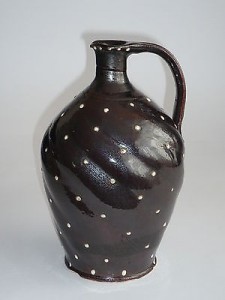
Boleslawiec artists formed the Professional School of Ceramics in 1897. The area was so famous for its pottery that Dr. Wilhelm Pukall left his position as technical director for the Royal Manufacture of Porcelain in Berlin to become the school’s first headmaster. Unfortunately, war once again tore through Boleslawiec during WWI. After the war ended in 1936, a cooperative consisting of six guilds was formed. This, however, was a step farther away from the pottery produced in Boleslawiec today. Bunzlauer Braunzeug, as the cooperative was called, was named for the town of Boleslawiec (the German town of Bunzlauer, the alternative name for Boleslawiec) and the color brown. The pottery emerging at this time was typical of the pottery created before Johann Gottlieb Altman came along and revolutionized the pottery of this region. It was brown with white decorations. This continued until WWII.
World War II to Present
Boleslawiec is only 50 miles from Germany and 80% of the manufacturers were destroyed during WWII. In 1950, however, the State Committee of Economic Planning commissioned the Centre of the Folk and Artistic Industry to rebuild the ceramics industry of Boleslawiec. There was a closed plant that was still standing after the war, called Julius Paul and Son. This is where Ceramika Artystyczna (Artistic Ceramics) started the first post-war factory making Boleslawiec Polish Pottery. At first they only made vases, but by the next year they were stamping and hand-painting dinnerware, and by 1954 they were a full cooperative with 45 employees. In 2000, Ceramika Artystyczna had over 230 employees and offered hundreds of patterns. This paved the way for the numerous other family businesses and cooperatives that exist in Boleslaweic today.
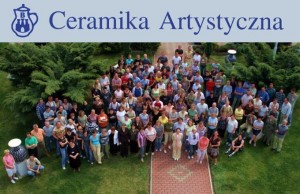
The history of Boleslawiec is truly incredible. To know what it took for the artists of Boleslawiec to exist today is fascinating. The ceramic artists of this region have proven to be strong-willed, resilient, and guided by what seems to be a desire and a calling to create beauty. Owning a piece of Polish Pottery is like owning a piece of history and perseverance; a piece of triumph over devastation, and of course, a piece of exquisite beauty.
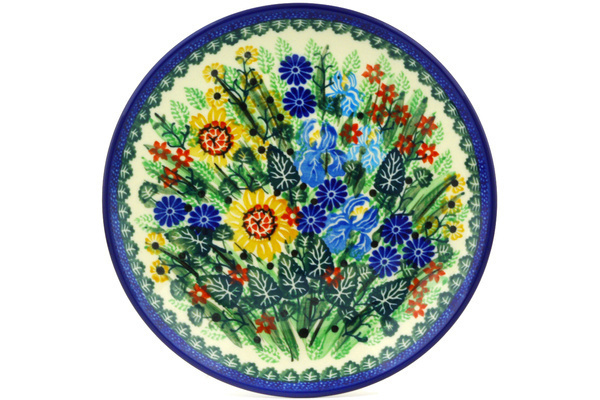
You can find Boleslawiec Stoneware & Dinnerware at Polmedia Polish Pottery.
